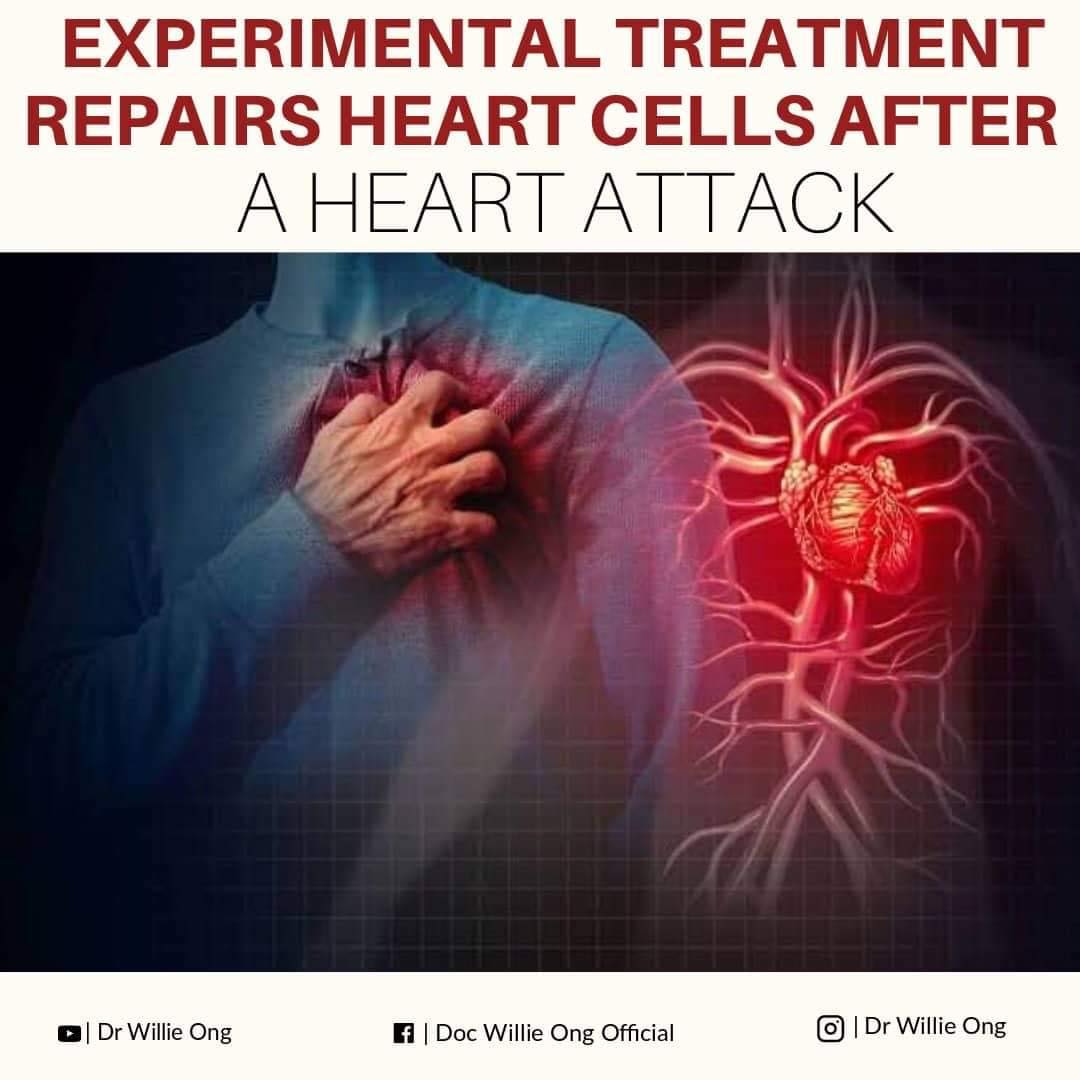By Doc Willie Ong
Scientists have developed a new treatment that restores heart muscle cells following a heart attack. After a month of using the new method on mice, their hearts regained nearly normal cardiac function.
The researchers plan to test the treatment on more animals before starting human clinical trials.
When the human heart cannot adequately pump blood and oxygen throughout the body, heart failure results. 379,800 Americans died of heart failure in 2018. This accounts for 13.4 % of the total deaths in the United States. A majority of the cases of heart failure happen because of the loss of cardiomyocytes – the heart muscle cells. These irreplaceable cardiomyocyte cells can be lost as a result of old age, high blood pressure, coronary artery disease, and heart attacks. The heart suffers irreparable damage from these conditions.
A heart transplant is the standard solution for heart failure. Unfortunately, heart donors are rare. Furthermore, there is always the possibility of the patient’s rejection of the transplanted heart. In the meantime, growing cardiomyocytes or heart muscle cells in a laboratory failed to produce any long-term solutions.
Recently, medical researchers have developed a new treatment that regenerated and repaired the heart muscle cells of mice suffering from heart failure.
Robert Schwartz is a Distinguished Professor at the Department of Biology and Biochemistry at the University of Houston in Texas. He is one of the leading experts on the human heart. According to Schwartz, shortly after birth, the human heart stops growing by cell replication. As we grow older, our heart becomes bigger as each cell in the heart increases in size.
After we are born, very few new heart muscle cells are produced in a person’s lifetime. In the case of an injury, like a heart attack, these heart muscle cells are deprived of oxygen and many of them are destroyed forever. After substantial damage, the heart’s ability to pump blood and oxygen is significantly reduced and can ultimately result in the death of the heart attack victim.
Fortunately, Animatus Biosciences has developed a pair of synthetically modified messenger RNAs (mRNA) that carries instructions to make 2 special proteins that can restart the process of cell replication and therefore replace the dead cells with healthy tissue to restore function to the heart. This study can be found published in the Journal of Cardiovascular Aging.
Scientists found that a protein called Serum Response Factor (SRF) is crucial in the creation of new cardiomyocytes or heart muscle cells. Another protein called YAP-5SA, was also found to affect heart muscle growth and production. The combination of these two proteins causes the cell to age backward to a stem cell-like state from which new heart muscle cells can develop.
In the study, researchers introduced a mutated form of the SRF protein called Stemin in combination with YAP-5SA protein to lab mice using modified mRNA technology. In a span of 24 hours after injecting the treatment into the left ventricles of the adult mice, they found a 17x increase in cardiomyocyte or heart muscle cell nuclei. Furthermore, the hearts of the mice had little scarring and were restored to almost normal function within a month. The study concludes that using mRNA to encode Stemin and YAP-5SA proteins is a promising way to treat heart disease in humans.
One of the study’s authors, Dinakar Iyer of the University of Houston’s Department of Biology and Biochemistry responded to a question regarding the study’s limits by saying that the biggest drawback of their study is that the findings are limited to mice only. Further study is needed to see if comparable results can be found in pigs. If so, the next move will be to seek FDA approval for trials on human heart patients.
Dr. Schwartz states that the mRNA combination may not work on people, but given that the genetic pathways activated by the mRNA combination are quite similar in all species, he is confident that it will be as effective in humans.
An author of the study and professor of Pharmacology at the University of Houston, Bradley McConnel, Ph.D. says that in the future, we may see less use of the left ventricular assist devices (LVADs), a mechanical device used as a bridge to transplant therapy in assisting the human heart after a heart attack. Instead of using a battery-operated LVAD pump for the heart, a simple injection of mRNA can heal the injured heart.
Dr. Iyer says that their study is unique in that it’s utilizing the same mRNA technology that is being used to generate our current COVID vaccines. The mRNA for the proteins Stemin and YAP-5SA may be delivered directly into a patient’s heart. The mRNA carries specific instructions to create the two special proteins. After the task is completed, the body breaks down the mRNA. Finally, the proteins enable the heart to repair itself.



